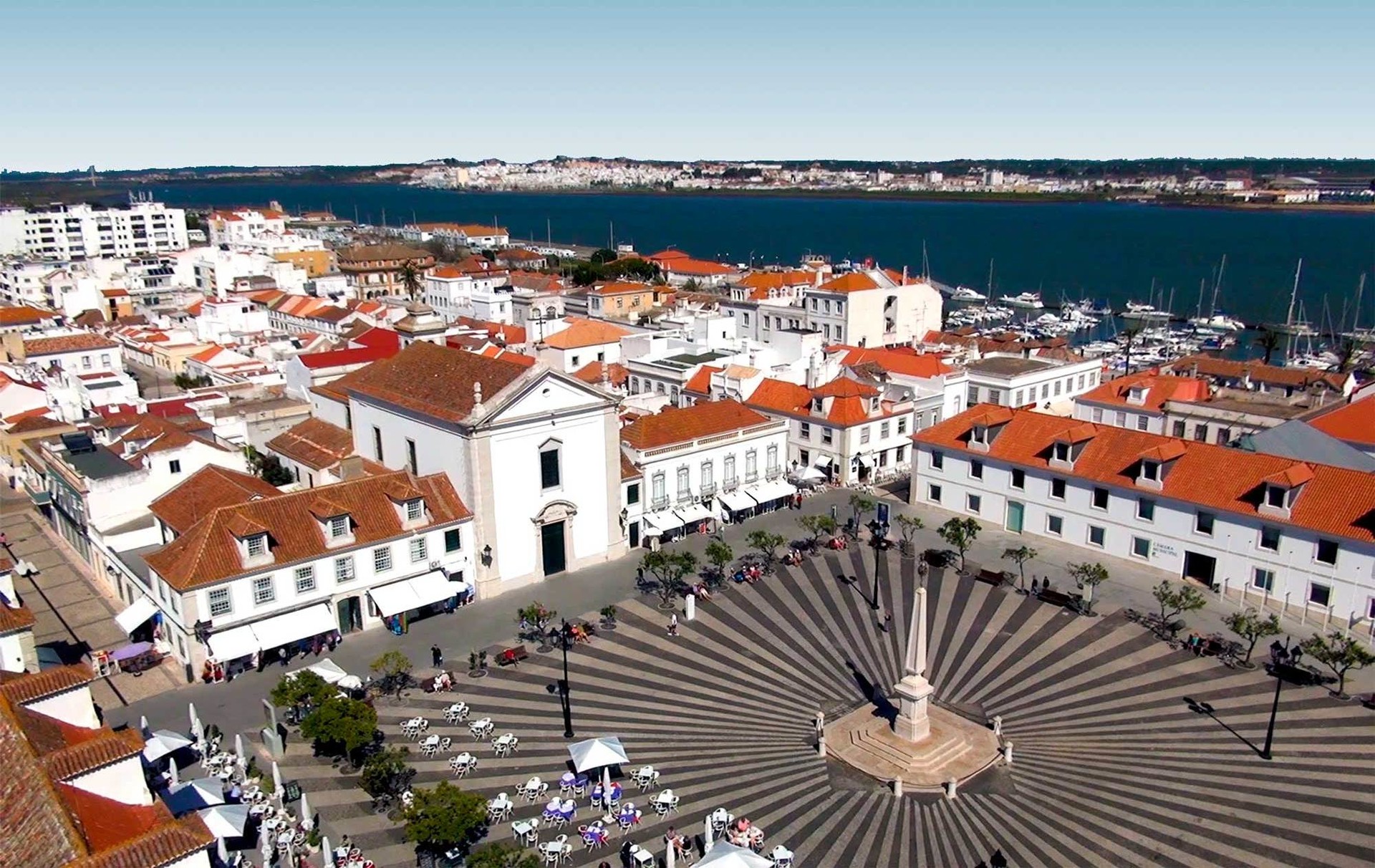
Vila Real de Santo António is Portugal’s southeasternmost city and a popular destination for Spanish tourists since only the Guadiana River separates the city from Spain. You can see the Spanish town of Ayamonte across the river and, thanks to the open borders, go between the two towns and countries by car or boat in just a few minutes.
Vila Real de Santo António is a former fish canning center but is now mostly a tourist town.
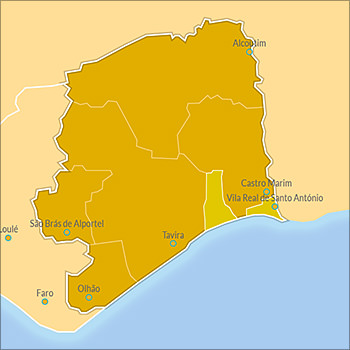
The heart of the city is Praça Marquês de Pombal, a square named after the man who rebuilt the city (and Lisbon) after the big earthquake of 1755.
Vila Real de Santo Antonio was constructed in 1774, to resettle the plague-ravaged fishermen from Aveiro and also claim the fishing waters of the eastern Algarve from Spain. The town was constructed in just two years and followed similar design ideas used for the reconstruction of Lisbon downtown after the 1755 earthquake, with a grid of streets lined with Pombaline (a neoclassical style named after Marquês de Pombal) buildings.
An obelisk stands in the middle of the square, which is surrounded by orange trees and covered with a traditional Portuguese cobblestone pavement. This is where people meet and enjoy drinks or meals at outdoor cafés and restaurants. Many of the streets around it are pedestrianized and lined with shops and more places for outdoor eating and drinking.
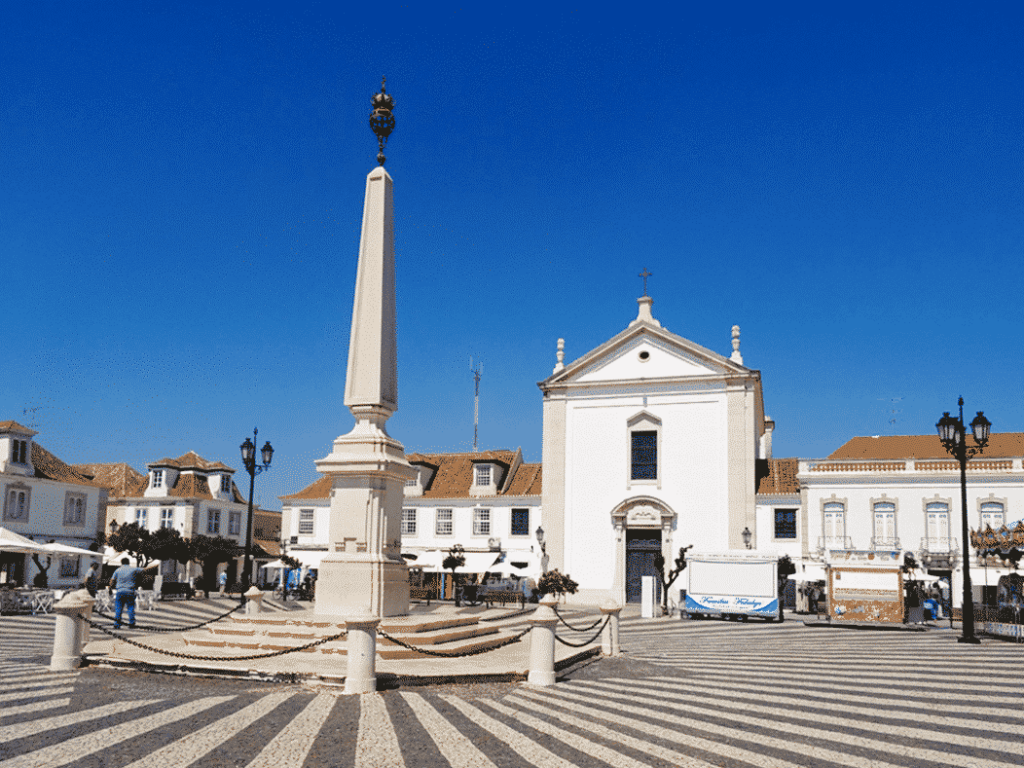
The city’s main church faces the square. The Igreja Matriz de Vila Real de Santo António dates from the late 1770s and was part of the post-earthquake reconstruction. It’s a rather plain building, with a simple neoclassical façade, but it does have notable Rococo altarpieces inside.
There isn’t much else to see in the city, but you can always check out the cultural events and exhibitions at Centro Cultural António Aleixo, in a historic building on Rua Dr. Teófilo Braga.
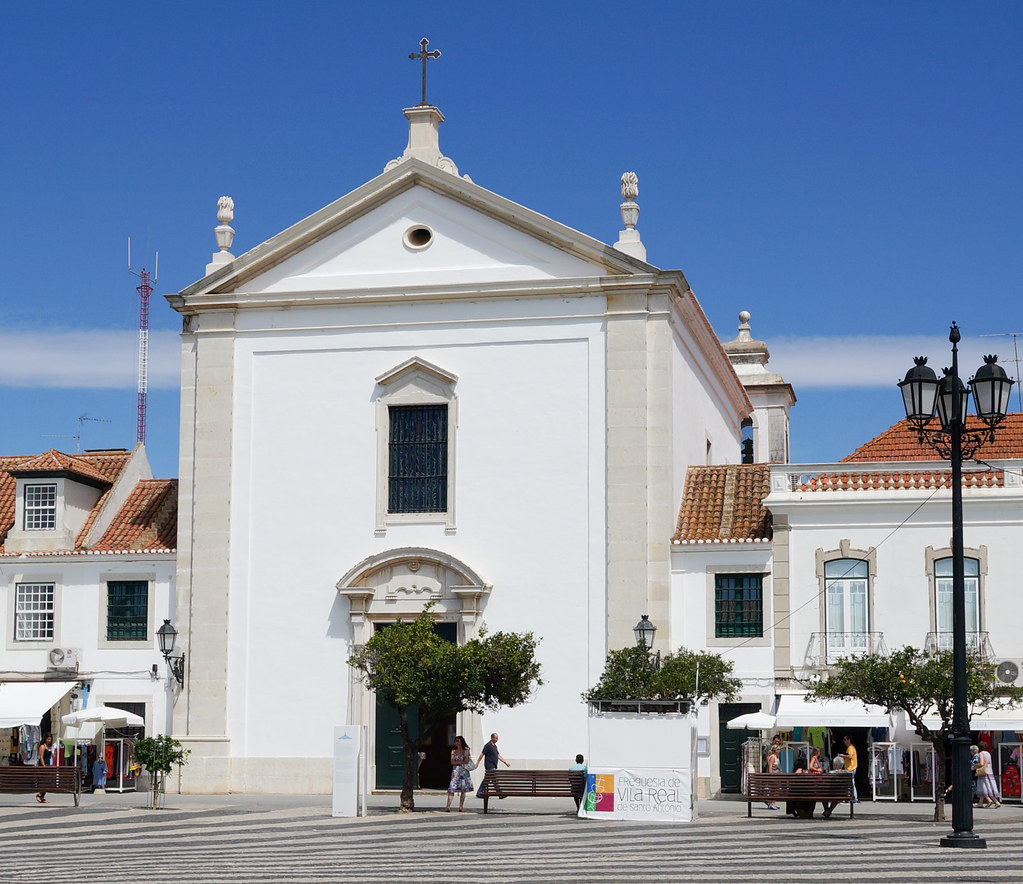
The waterfront promenade (Avenida da República) is a great destination at the end of your visit. Here you’ll see the harbor and the many boats that cruise the Guadiana River, and the ferries that cross the river between Portugal and Spain (from Vila Real de Santo António to Ayamonte) in about 15 minutes.
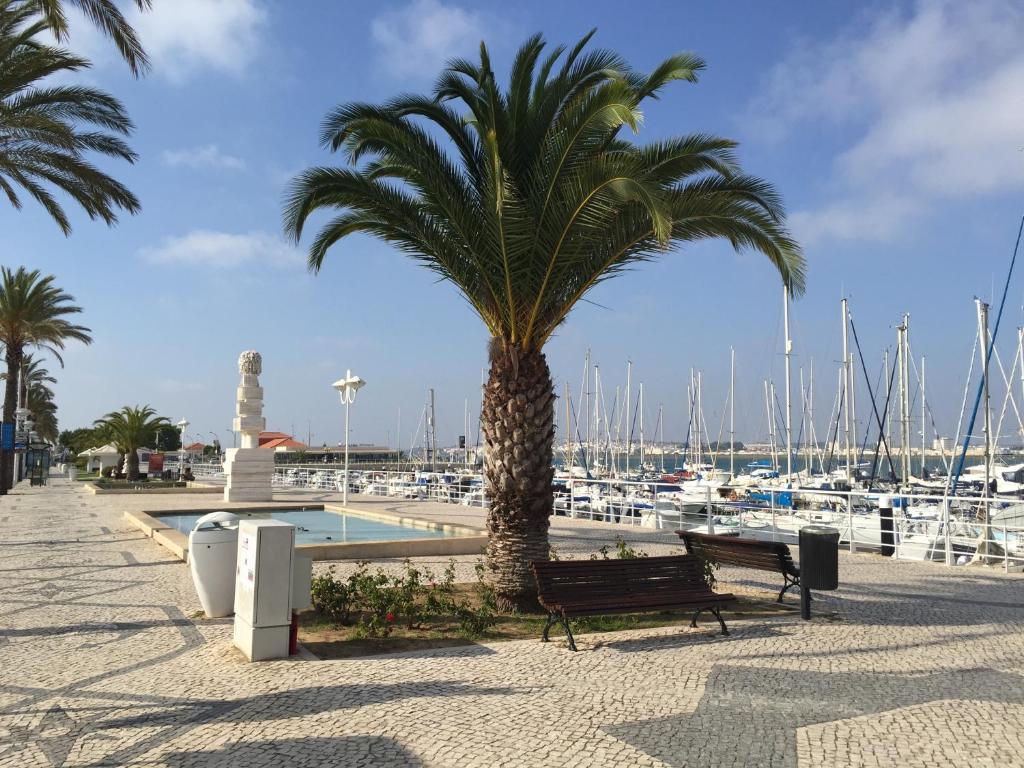
Attractions in Vila Real de Santo António
Vila Real de Santo Antonio may not be as famous as other towns in the Algarve, and this is only a small town but has a surprising amount to see for your day trip.
- The Praça Marquês de Pombal
The grand plaza at the heart of the small town was named after the 18th-century prime minister who designed the town and oversaw its construction.
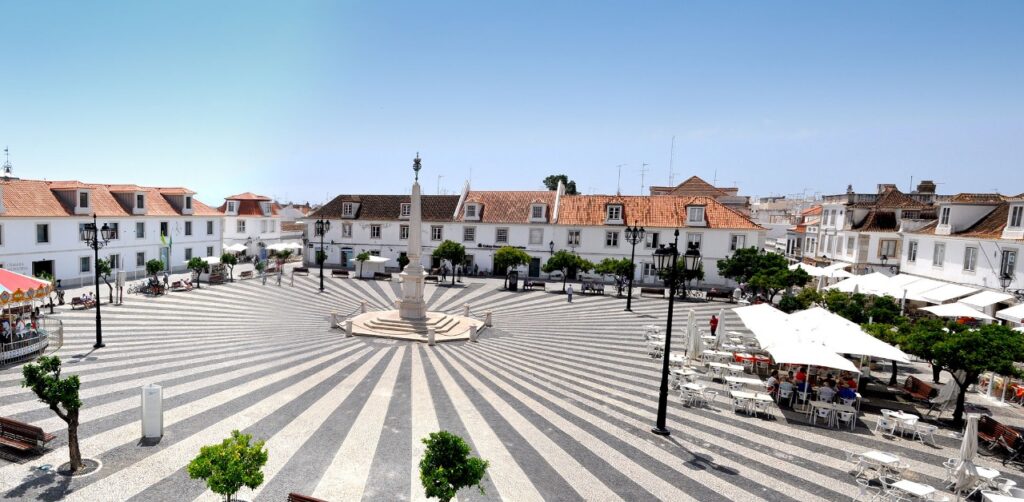
- Ferry ride from Portugal to Spain
Cross the slow-flowing waters of the Rio Guadiana, the natural border between Spain and Portugal, and visit Ayamonte. Just remember that Spain is in a different time zone, and is 1 hour ahead of Portugal!

- Mata Nacional das Dunas de Vila Real de Santo António
Between Monte Gordo and Vila Real de Santo António is located a pine forest named Mata Nacional das Dunas de Vila Real de Santo António, whose three kilometers (close to two miles) are the natural habitat of chameleons and a popular destination for picnics and hiking. It was planted in the 19th century to stabilize the coastal sand dunes. Today the forest provides tranquil walks, deserted beaches, and the perfect habitat for Portugal’s chameleons to hide. There’s also a bike path in the shade of the pine trees. This path (for bicycles and hikers) is known as ‘Caminho dos Três Pauzinhos’ and is quite a pleasant way to reach the beaches, through the fragrant pine trees and thyme and curry plants.
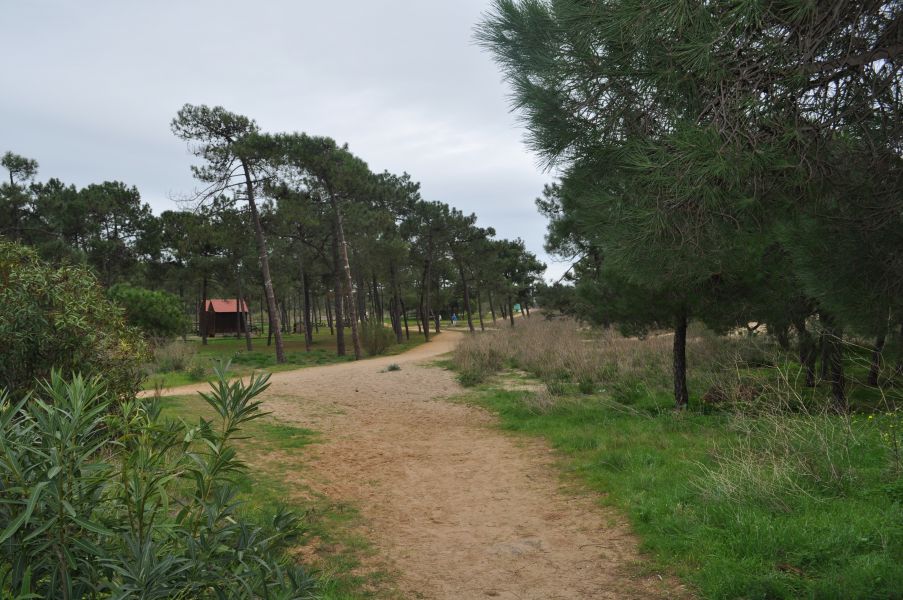
Beaches by Vila Real de Santo António
Vila Real de Santo António has a beautiful sandy coastline of pristine beaches. These are some of the quietest beaches of the Algarve and rarely get busy, even at the height of the summer season.
Vila Real de Santo António’s beaches are part of the 14 km stretch of sandy coastline that extends from the mouth of the Rio Guadiana in the east to the village of Cacela Velha in the west.
From the city, walk down Avenida da República and the riverfront (20-30 min walk) to Praia de Santo António, Algarve’s easternmost beach, sometimes also called Praia da Ponta da Areia or Praia dos Três Pauzinhos.
There are two beaches in Vila Real de Santo António; the Praia da Ponta da Areia beach and the Praia de Santo António.
Areia Beach is to the east and at the mouth of the Guadiana River, while Santo António Beach extends along the sand dunes and pines forests of the Mata Nacional das Dunas de Vila Real.
Surprisingly, not many people come here, so there’s always plenty of space and quiet.
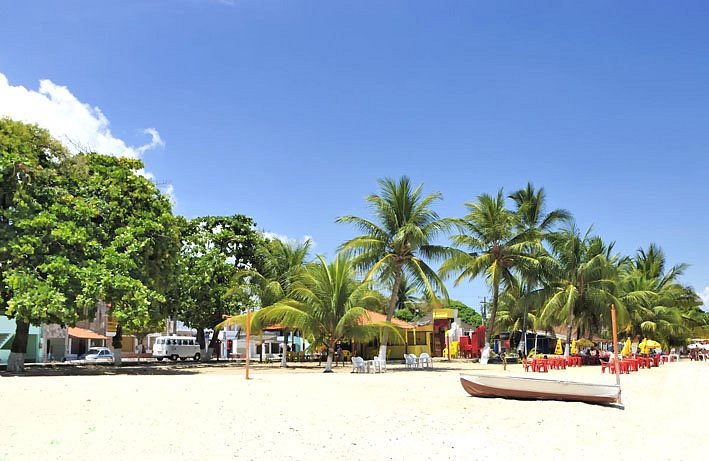
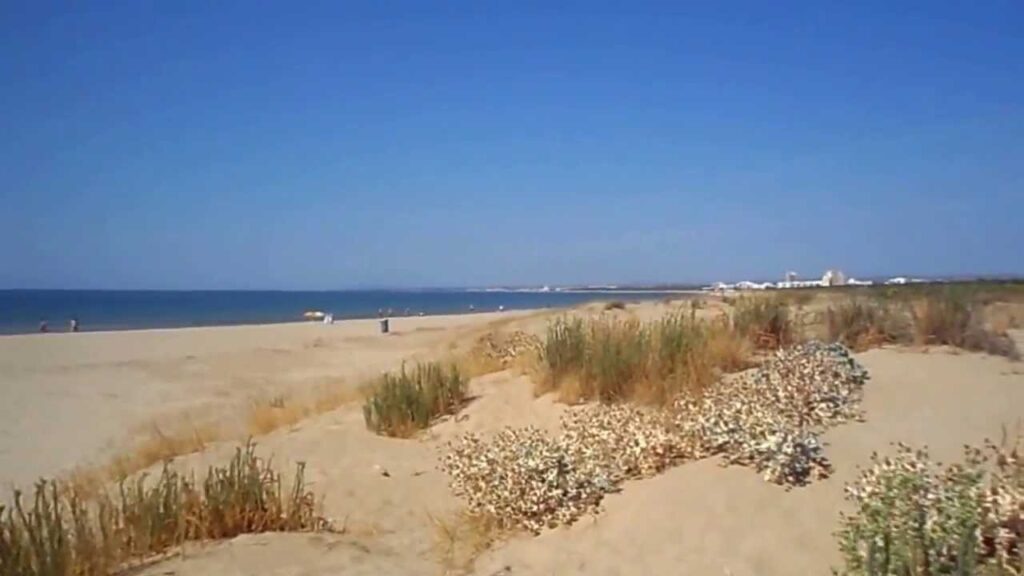
Both are beautiful beaches surrounded by sand dunes and offer kilometers of soft sands and calm sea waters. As these are remote beaches, there are no beach cafes, shops, or facilities. There is a car park for both of them at the end of a dirt track.
Somewhere a bit more exclusive is the Grand Beach Club, a trendy beach venue at the mouth of the Rio Guadiana:
grandhousealgarve.com/grand-beach-club/
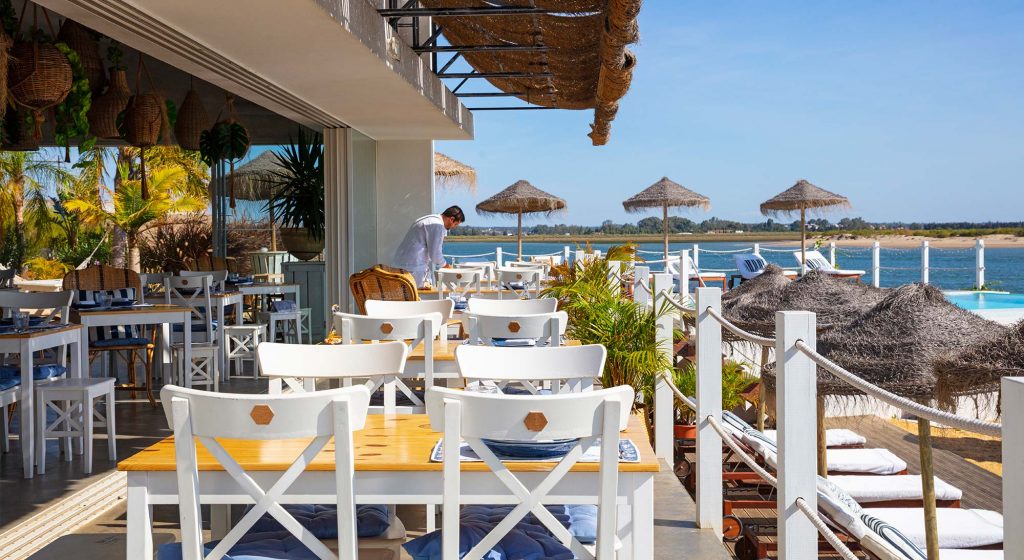
If you keep walking by the sea, you can reach Monte Gordo in about a half hour. By car or bicycle, it’s about ten minutes. Locals and Spanish tourists prefer the livelier beach of Monte Gordo nearby.
The beaches are in a continuous 12 km (7.5 miles) stretch of clean, white sand, which ends at Cacela Velha and the Ria Formosa Natural Park. The water temperatures tend to be a couple of degrees higher than elsewhere in the Algarve. There’s lifeguard supervision in the summer. While Monte Gordo has a backdrop of high-rise hotels, Praia de Santo António remains undeveloped and is backed by dunes.
How to get to Vila Real de Santo António
The train station is within walking distance of the city center and about a dozen trains per day go from Faro to Vila Real de Santo António, taking about 1 hour and 10 minutes.
There’s also a bus (Vamus n° 67), departing from Faro about half a dozen times per day.
By car, it’s about 45 minutes on highway A22 or 1 hour and 10 minutes on road N125.
From Monte Gordo, you can take bus 96 to Vila Real de Santo António, departing about a dozen times per day in the summer and taking just 10 minutes. The less frequent buses 43 and 67 also stop in Monte Gordo and terminate in Vila Real de Santo António.
Accommodation in Vila Real de Santo António








